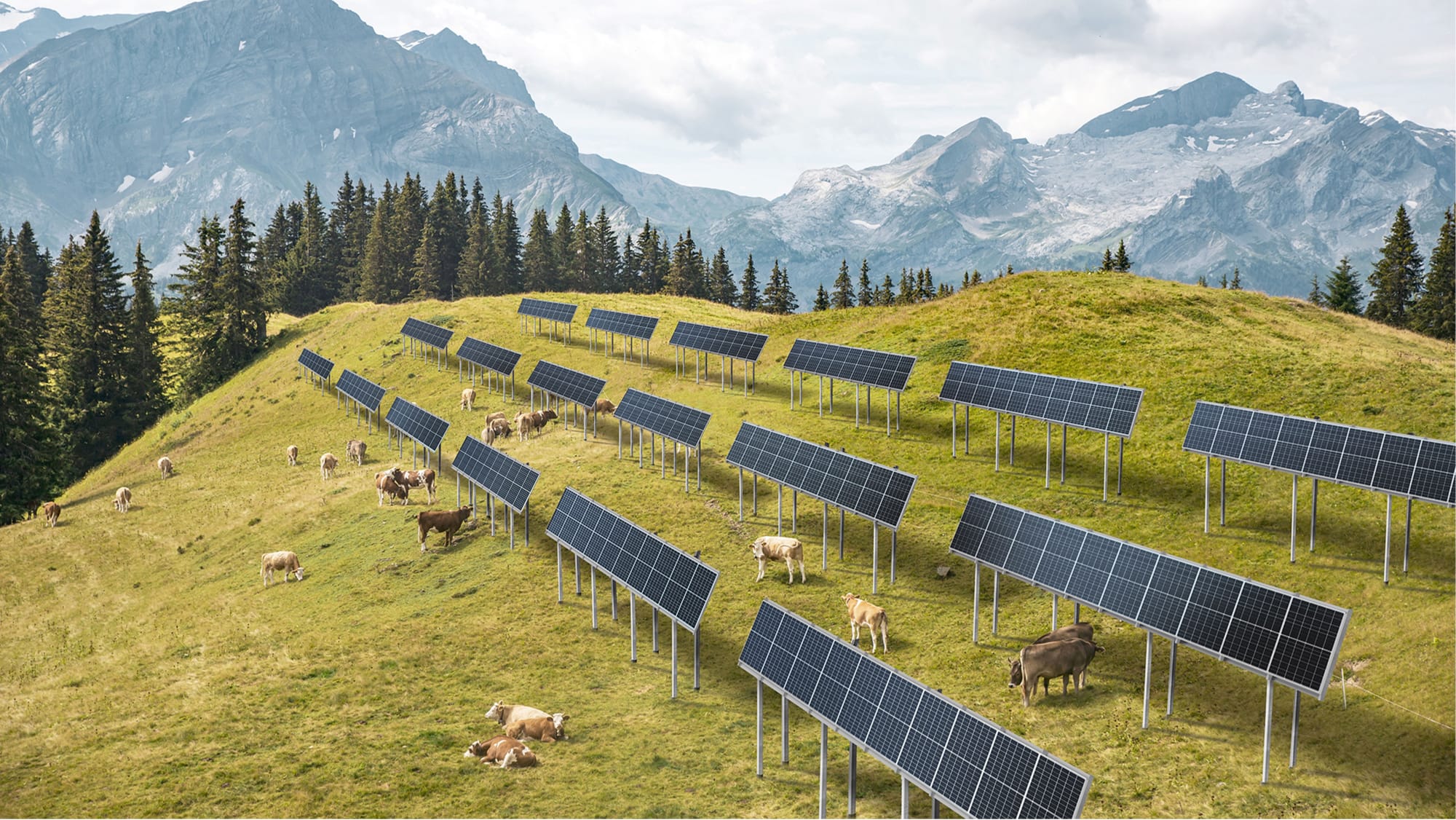
Impact Gstaad Project
SolSarine
As of autumn 2022, the Swiss Federal Energy Act provides for simplified building permits for large-scale photovoltaic plants in the Alps. Impact Gstaad also wants to take advantage of this opportunity and implement the "SolSarine" sustainability project: Alpine photovoltaic plants are to be built at four to six locations in the Saanenland by 2027 in order to ensure a secure power supply with local, renewable energy.
A cheer for the mountain sun
The Saanenland aims to become a 100 per cent energy self-sufficient destination with the installation of alpine photovoltaic systems. With the sustainability project "SolSarine", the Impact Gstaad association is planning to install solar modules at four to six locations in cooperation with various partners. These are to produce local, renewable solar energy. "In this way, we use and protect our natural resources, strengthen our independence and increase the security of supply," says co-initiator Matthias In-Albon, who is also CEO of Bergbahnen Gstaad.
Impact Gstaad is thus implementing what parliament initiated in the 2022 autumn session with the "Urgent measures for the short-term provision of a secure electricity supply in winter". By the end of 2025, large-scale alpine photovoltaic plants with a minimum annual production of 10 GWh are to be promoted and approved in a simplified procedure. For example, there is no longer a planning obligation, the need does not have to be proven, and the interest in realising such plants takes precedence over other national, regional and local interests. In total, the federal government provides subsidies amounting to 3.4 billion Swiss francs to produce 2 TWh and covers up to a maximum of 60 per cent of the investment costs of a project.
0.8 per cent community area for 100 per cent domestic electricity
According to studies, large-scale photovoltaic plants in the Alps produce 40 percent more electricity than solar modules in the Central Plateau. This is due to the more intensive solar radiation, particularly as a result of more sunny days in winter. "The mountain regions of the cantons of Bern, Valais and Graubünden are the main beneficiaries of this legislation," says National Councillor Erich von Siebenthal (SVP, Saanen), who also voted in favour of the amendment. "Now the regions can take these challenges into their own hands or leave the field to the electricity companies."
The sites in the "SolSarine" project are particularly suitable for the construction of alpine photovoltaic plants because they are all well developed. This has a favourable effect on the production costs and the grid connection. A total of 40 to 50 hectares, or 0.8 percent of the municipal area of Saanen, is sufficient to cover over 100 percent of the energy needs of the entire destination with local solar power. Impact Gstaad expects the project to cost between 100 and 150 million Swiss francs, of which up to 60 percent will be financed by the federal government. The municipality of Saanen supports the project ideally and financially by contributing to the project planning costs.
The approval of the site municipalities and the landowners or tenants is required before any permit can be granted. "We have already approached several landowners and alpine farmers and were surprised by the mostly positive reactions to our vision," says co-initiator Lorenz Furrer, Co-Founder Impact Gstaad. As soon as the site communities, landowners and tenants have given their consent, an avalanche report and an environmental impact study will be prepared for each site. The corresponding requirements regarding landscape and environmental protection are not restricted by the amendment to the law. If the conditions are fulfilled, the Canton of Berne can grant final approval for alpine photovoltaic systems.
No restrictions for agriculture and alpine farming
Electricity production and agriculture and alpine farming can coexist optimally in the "SolSarine" project. For example, the solar modules are located about three metres above the ground so that agricultural machinery and farm animals such as cows or sheep can pass underneath without restrictions. In addition, the distances between the module rows are adapted to the needs of alpine farming. And the solar plants do not have any negative impact on the contributions for the summer farms. In addition, the installations are equipped with an anitreflex layer to protect the landscape and convert more sunlight into energy. The installation of the solar modules does not require any major intervention in nature: the systems are to be fixed to the ground with screw foundations only and not with concrete elements. And the solar modules are positioned at a certain angle so that the snow does not stick.
Impact Gstaad plans to submit the permit, including the environmental impact assessment, in summer 2024 so that "SolSarine" can be entered on the so-called reservation list of the Swiss Federal Office of Energy. By the end of 2025, the approval procedure and the construction project for a first stage should be realised - 10 per cent of the final output of 74 megawatt hours. All planned sites are to be in operation by the end of 2027.
A public information event for the population is planned for March 2023.